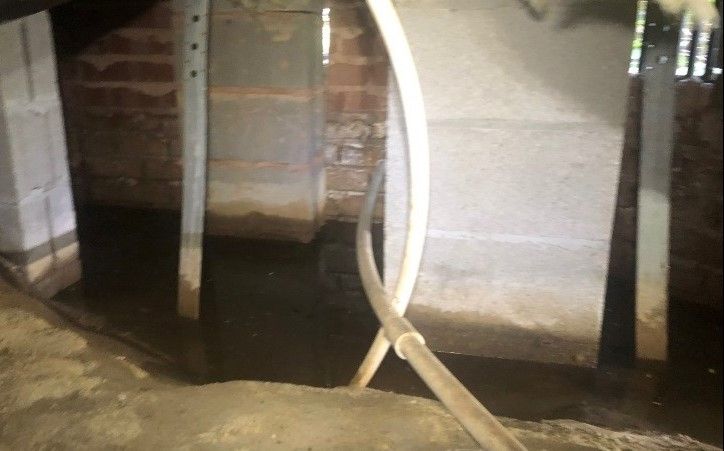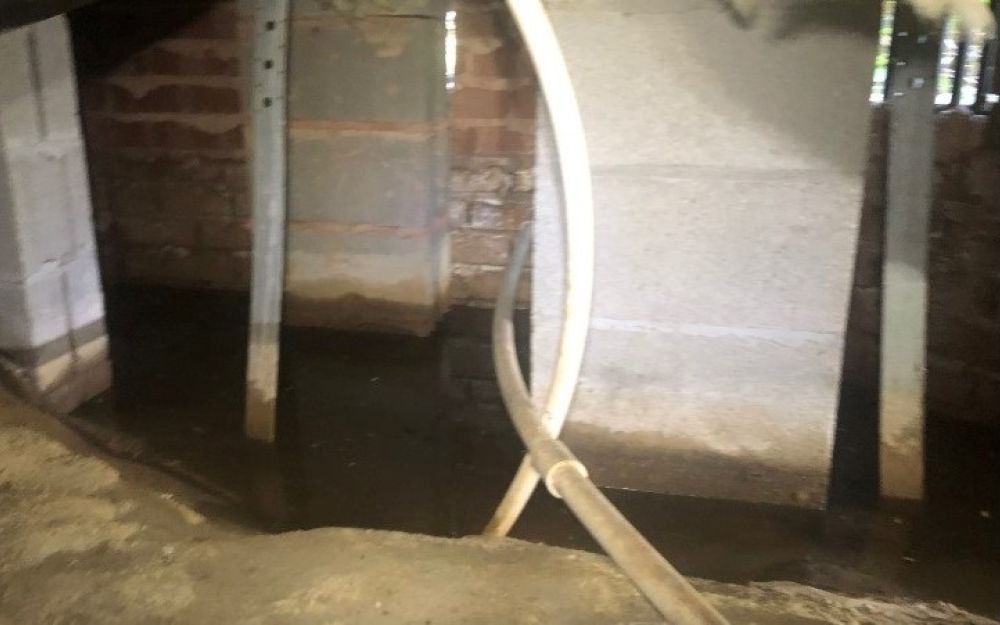What to Do About Standing Water in Your Crawl Space



Staggering but true: Around 14,000 people in the U.S. are affected by water damage daily. And in coastal areas of Virginia and North Carolina, standing water in the crawl space is a pervasive problem. Imagine your crawl space acting like a shallow pool beneath your house.
This unwanted water can herald bigger issues if not handled properly. So, how can you wrestle with this damp intruder and ensure a dry, healthy foundation for your home? Stick around and you’ll uncover an actionable guide to tackle and prevent standing water in your crawl space.
Signs of Standing Water in Your Crawl Space
When it comes to keeping your home safe and dry, vigilance is key. It’s not always easy to spot standing water under your house. Here are some common signs to look out for.
Musty Odors
If your house often smells musty, it might be due to standing water in the crawl space. This is often one of the first signs homeowners notice.
Mold Growth
When there’s excess water, mold usually follows. If you see or smell mold, it could mean water is accumulating in your crawl space.
Pests
Bugs love damp environments. A sudden increase in pests could indicate a water issue in your crawl space.
Higher Utility Bills
Excess moisture can make cooling and heating your home more difficult. This can lead to higher utility bills. There can be lots of different causes for standing water so it’s best to stay alert!
Steps to Take When You Discover Standing Water
Finding water in your crawl space can be alarming, but acting fast can prevent more significant issues. Here are the crucial steps to follow when you encounter this problem.
Ensure Safety First
Before entering the crawl space, equip yourself with safety gear, including a mask, gloves, and even a jumpsuit. This will protect you from potential mold, bugs, or any sharp objects that might be hidden in the water.
Inspect the Area
Start by identifying the source of the water. Is it a pipe leak, poor drainage, or even a natural spring? Look for wet patches on walls, dripping water, or seepage from the ground. Note these details down as they’ll be useful for devising a long-term solution.
Remove the Water
Based on the water’s amount and source, devise a strategy to eliminate it. A temporary pump can handle small amounts of water, while a permanent sump pump may be necessary for larger quantities. This step might take some time, but it’s crucial to remove as much water as possible.
Dry the Area
Once the water is removed, shift your focus to drying out the space. Deploy fans, vapor barriers, or dehumidifiers to expedite the drying process. You could also open up the vents and doors to improve airflow. Remember, completely drying a damp space can take a few days.
Clean and Sanitize
Now, it’s time to clean up. Remove any water damaged items from the crawl space. Often times, that means disposing of the vapor barrier and replacing it with a new one. For mold growth, a professional mold remediation may be recommended to kill existing mold and help prevent future growth.
Document the Damage
Take photos and jot down notes about the damage caused by the standing water.
This process might seem daunting, but it’s necessary to protect your home from the risks posed by standing water. Remember, if the issue persists or the damage is substantial, don’t hesitate to call professionals to help maintain a safe, dry crawl space.
Stop Water From Gathering in Your Crawl Space Long-Term
Preventing standing water from recurring under your house is a crucial part of home maintenance. It requires foresight and the implementation of specific strategies. Here are some key tactics to consider:
French Drains
French drains are an effective solution for standing water. They’re trenches filled with gravel or rock containing a perforated pipe that redirects surface water away from your house. They work well for homes situated on slopes or in locations prone to heavy rain.
Sump Pumps
If you live in a low-lying area or a region prone to flooding, a sump pump can be a lifesaver. It’s a device installed in the lowest part of your crawl space that collects excess water and pumps it away from your home. It automatically activates when water reaches a certain level, preventing the accumulation of standing water.
Vapor Barriers
Vapor barriers are materials applied to the floors and walls of your crawl space that block moisture from entering. They act like a protective shield, keeping your crawl space dry and reducing the chance of mold or mildew growth.
Gutters
Maintaining gutters is vital for controlling water around your property. Clean, well-functioning gutters direct rainwater off your roof and away from your home, preventing it from pooling around your foundation and potentially entering your crawl space.
Downspout Extensions
These are additions to your downspouts that divert water further away from your home. By installing downspout extensions, you can ensure that water drains a safe distance from your foundation, reducing the risk of it seeping into your crawl space.
Knowing When to Reach Out to the Experts
There are moments when solving the problem on your own might be too much. Maybe the water just won’t stop coming back, or the mold keeps growing. That’s when it’s crucial to call in the professionals.
Experts bring both the right tools and the right know-how to the table. They can put in a sump pump to take out the water. This tool can be really helpful if your house is in a spot that’s lower than its surroundings or if it often gets flooded.
A professional might also propose encapsulation, a process where your whole crawl space gets sealed off from the outside world.
Professional help can also sort out complex issues. If there’s a natural spring under your house or the water table’s high, you may need a specialized drainage system. There are lots of other common crawl space problems they can help with.
Act Today for a Dry Tomorrow
Don’t let standing water under your house turn into a common crawl space problem. Properly eradicating standing water can require professional expertise. The good news? You’re not alone in this.
Our highly-rated team has been helping homeowners in Virginia and North Carolina to achieve a permanently dry crawl space. Ready to get rid of standing water and safeguard your home? Arrange a free inspection of your property today.

